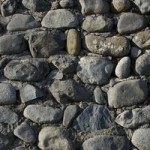Energy Conservation in your Home. Turning your home into an energy efficient house not only helps the environment but also saves you up to forty percent in your energy consumption charges. This is in comparison to the average home in North America.
Keep your furnace clean, lubricated and properly adjusted with annual maintenance. If your furnace is working at peak efficiency it will use less energy and cost less to operate. Clean or replace the filter every 1-2 months – a dirty filter reduces the airflow and forces the furnace to run longer to heat your home. Set back your thermostat when nobody is home and at night when everyone is sleeping for added savings. Heating your home constitutes your largest energy expenditure. Even a little conservation of heating fuel goes a long way toward achieving a lower utility bill. Dialing down the thermostat one degree during the winter can result in about 1 to 3 percent less fuel use, and a similar reduction in your heating bill.
When doing laundry use cold water and save from 85 to 90 percent of the energy you would normally use. Front loading machines use less water and energy, up to fifty percent. Also wash full loads to ensure you are fully utilizing energy being consumed.
You can make a lot of progress toward improving the energy efficiency in your home by simply plugging the many places through which air can get in or get out. Plugging your home is called “air sealing,” and it is one of the most important first steps to take when weatherizing your house to increase its energy efficiency.our windows and doors allow a lot of energy to escape which is costing you money. Ensure all your window frames, door frames and sills are caulked using a silicone based sealant. Make sure your heat registers are not being blocked by furniture.
Your water heater is the next largest home energy load after heating and cooling. To reduce water heating energy use ensure your water heater’s thermostat is set to 120F . Improvements such as installing low-flow faucets and shower heads, and insulating hot water pipes will also help you save money on water heating. When replacing your hot water heater consider buying an Energy Star model to ensure greater efficiency.
Air conditioners typically have a life expectancy of twenty years. Even after your unit is 10 years old you can save up to 40 percent of your efficiency by replacing your older model with newer air conditioner with a minimum SEER rating of 15.
Learn about Barrie Home Inspection Information. Stop by The Barrie Home Inspector’s site where you can find out all about the Barrie Home Inspection Services you will need.

 Your older homes foundation is probably constructed of cement and stone. There would have been no waterproofing done to the exterior of the foundation and there will be no weeping tile draining into sump. This inspection area is one of the most important and expensive to repair if faulty.
Your older homes foundation is probably constructed of cement and stone. There would have been no waterproofing done to the exterior of the foundation and there will be no weeping tile draining into sump. This inspection area is one of the most important and expensive to repair if faulty. Your house is old and gorgeous, as are those wonderfully ornate cast-iron radiators, but these days, energy prices are anything but old-fashioned. Older homes have radiators sized for a time when open-window ventilation was popular and insulation was uncommon. If you’ve insulated and updated your windows, your radiators are most likely larger than they need to be. You should have your home assessed by a heating expert to evaluate the expense and available options if required to upgrade your heating system. Many people are using GEOthermal heat pump systems when they are in the country and have no real alternative fuel source. Oil and propane are available for people who have no access to natural gas but can be very expensive, especially in older homes that may be lacking in insulation and thermal protection.
Your house is old and gorgeous, as are those wonderfully ornate cast-iron radiators, but these days, energy prices are anything but old-fashioned. Older homes have radiators sized for a time when open-window ventilation was popular and insulation was uncommon. If you’ve insulated and updated your windows, your radiators are most likely larger than they need to be. You should have your home assessed by a heating expert to evaluate the expense and available options if required to upgrade your heating system. Many people are using GEOthermal heat pump systems when they are in the country and have no real alternative fuel source. Oil and propane are available for people who have no access to natural gas but can be very expensive, especially in older homes that may be lacking in insulation and thermal protection.
Recent Comments